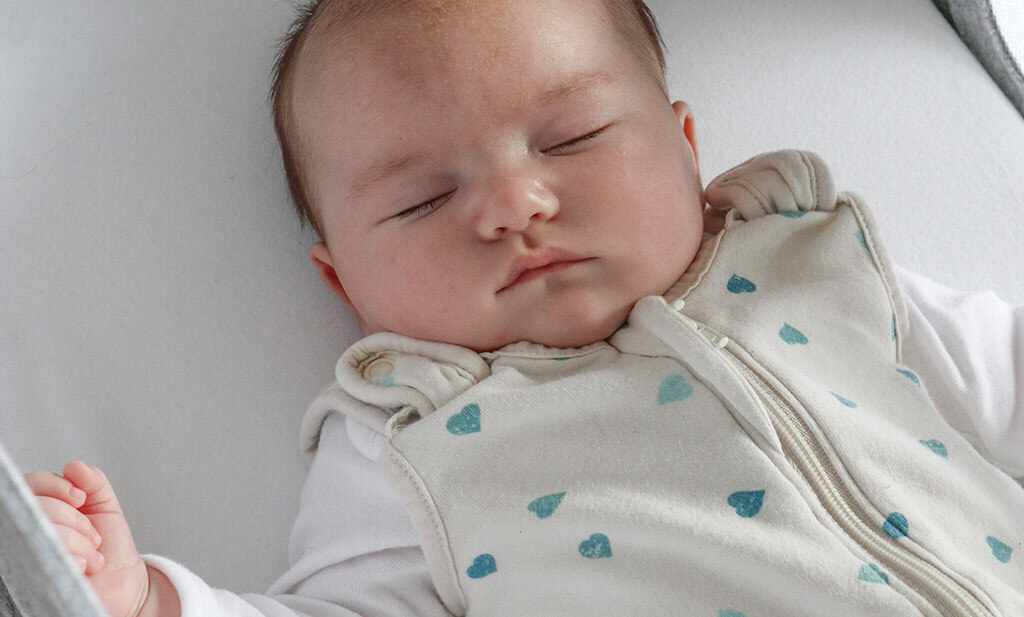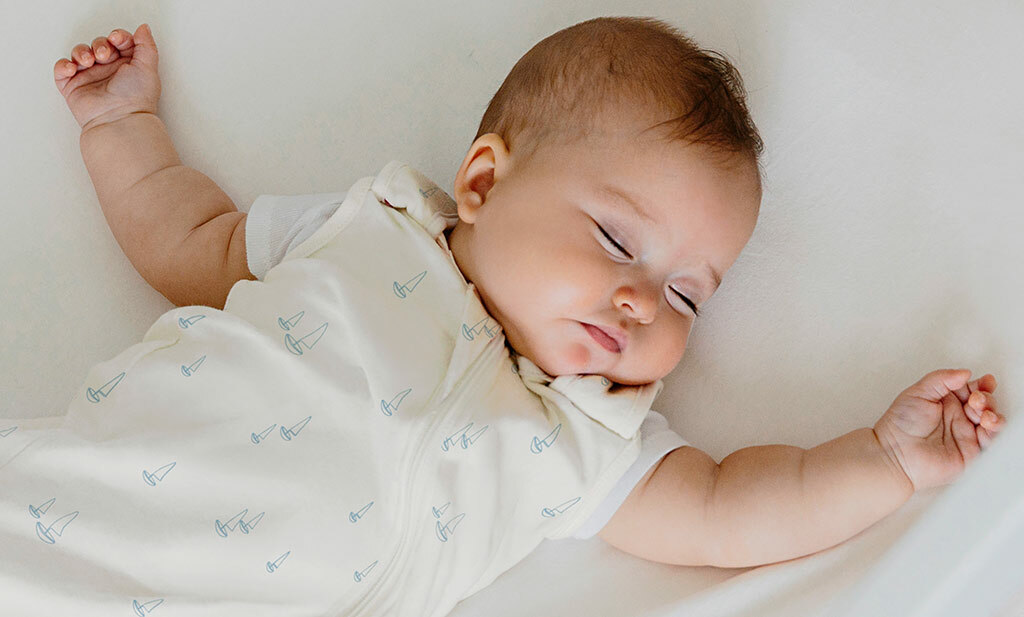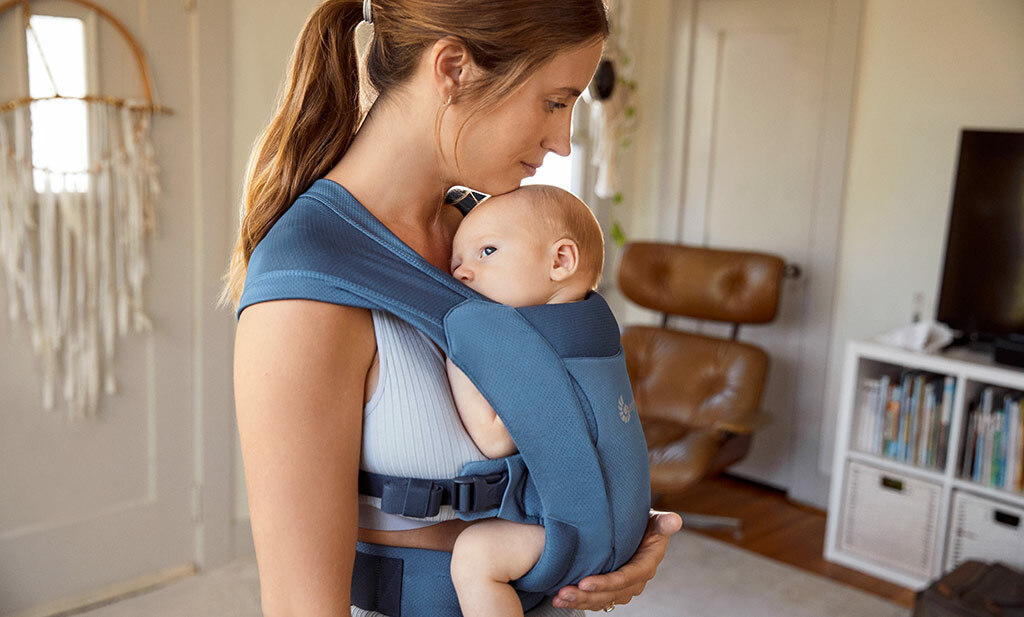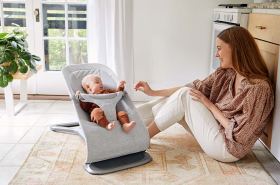
Our UK sleep specialist Gemma Coe is a mum of two and a certified baby and child sleep consultant. She helps families all over the world develop healthy sleep habits and has shared a lot of her knowledge over on our blog. Everything from tips for helping baby sleep in winter to knowing when to switch from a sleeping bag to a duvet to managing baby’s sleep after travelling Today she’s sharing with us her thoughts on the best baby sleeping position and why it’s the best.
When it comes to ensuring the safety and comfort of your newborn during sleep, understanding different sleeping positions, and which are safest for your baby, is crucial. Parents often ask me about the best sleeping positions for their babies, especially when their newborn starts to show signs of rolling to one side.
Let’s take a look at baby sleeping positions, focusing on safe sleep practices, and addressing some common concerns that crop up such as reflux and wind (gas).
What are the best positions for baby sleep?
Sleeping safely with your baby is a top priority for parents and is central to all the advice I give. The following guidelines are essential for creating a safe sleep environment:
- Always place your baby on their back to sleep for naps and nighttime. This position is the safest and reduces the risk of SIDS.
- Use a firm mattress covered with a fitted sheet. Avoid soft surfaces like couches and armchairs.
- Keep the cot free of soft objects, toys, pillows, and loose bedding. These items pose a suffocation risk.
- Room share: Share your room with your baby for at least the first 6 months to reduce the risk of SIDS. Side sleepers, a small crib that attaches to your bed, are great for keeping your baby in their own sleep space but close enough for easy night feeds.
- Dress your baby in light sleep clothing and keep the room at a comfortable temperature. Overheating can increase the risk of SIDS. The Lullaby Trust recommends an ideal room temperature of 16-20°C.

Newborn rolling to side (the newborn scrunch or curl)
Many parents feel worried if they notice their newborn rolling to their side during sleep. This position, often referred to as the “newborn scrunch” or “newborn curl,” might look like the baby is starting to learn to roll. However, this is typically a natural reflex rather than an intentional movement. Newborns have a tendency to curl up into a foetal position, which can cause them to roll to their side.
Despite this reflex, it’s important to always place your baby on their back to sleep. If you notice your baby has rolled to their side, gently roll them back. Consistently placing your baby on their back helps establish safe sleep habits and reduces the risk of SIDS.
When babies learn to roll: ‘getting stuck’
This is a pretty big milestone to reach! As babies grow and develop their motor skills, they begin to experiment with rolling. During this phase, it is very common for babies to roll to their side at nighttime and get “stuck.” This can be frustrating for them, leading them to cry out and it can be concerning/tiring for parents.
Apart from some gentle reassurance that this phase will pass when they finally master the skill, here’s what you can do to help:
- Continue to offer supervised tummy time in the day. This helps develop those muscles which are essential for rolling both ways.
- Keep an eye on your baby when they are trying to roll. If they get stuck on their side, try to help them complete the roll. Use the opportunity for teaching the skill. If they’re really stuck then assist them by rolling them back.
- Don’t be tempted by sleep positioners or wedges to keep your baby in a specific position. They are not safe for sleep.
When is it safe for a baby to sleep on their front or side?
It is generally not safe for babies to sleep on their front or side until they have reached certain developmental milestones. As we know, all babies develop at different rates so here’s what you need to consider:
- No matter whether they can roll independently or not, continue placing your baby on their back to sleep for all naps and nighttime sleep until they are at least one year old. This position is the safest and significantly reduces the risk of SIDS.
- Once your baby can roll over from back to front and front to back entirely on their own, it is usually safe for them to sleep in the position they choose. At this stage, they have developed the necessary motor skills to adjust their position during sleep, which helps prevent suffocation. However, as mentioned, still place them on their back when you put them down at least in the first year. You just no longer need to roll them back if they end up on their side or front on their own.
- Even when your baby starts rolling both ways confidently, continue to ensure their sleep environment is safe. Use a firm mattress, avoid soft bedding, and keep the cot free of toys and pillows.
Note: When your baby shows the first signs of rolling you will need to transition from using a swaddle to a sleeping bag so they have their arms free.
What’s the best sleeping position for colic baby?
Babies with reflux often experience discomfort when lying flat on their back. The management of reflux can be complicated and should be discussed with your child’s health professional before making any adjustments.
They may suggest a period of being held upright before being packed back down. Holding your baby upright for 20-30 minutes after feeding may help reduce reflux symptoms and make it more comfortable when placed on their back for sleep after a feed.

My baby has wind/gas pains, what’s the best sleeping position?
This is common during the newborn stages and also for babies starting to wean. A build up of wind/gas can cause discomfort and disrupt a baby’s sleep. Here are some positions to help alleviate wind:
1. Continue with back sleeping. While on their back, gently moving their legs in a bicycling motion can help release wind.
2. While babies should not sleep on their stomachs, supervised tummy time while they are awake can help relieve wind before nap or bedtime. This position helps strengthen their muscles and can move those bubbles of wind through the body.
3. Brief periods of side lying while the baby is awake and supervised can also help relieve wind. Always ensure they return to their back for sleep.
Safety first for finding the best baby sleeping position
Ensuring a safe sleeping environment for your baby is paramount. The safest position is always the best baby sleeping position. Always prioritise placing your baby on their back to sleep, use a firm sleep surface, and avoid soft bedding. Always speak to a health professional before making any adjustments to your baby’s sleep position. They will be able to offer personalised advice for your baby. Safe sleep practices not only protect your baby but also provide peace of mind for you too.
Web: www.childsleepspecialist.co.uk
Instagram: @childsleepspecialist



